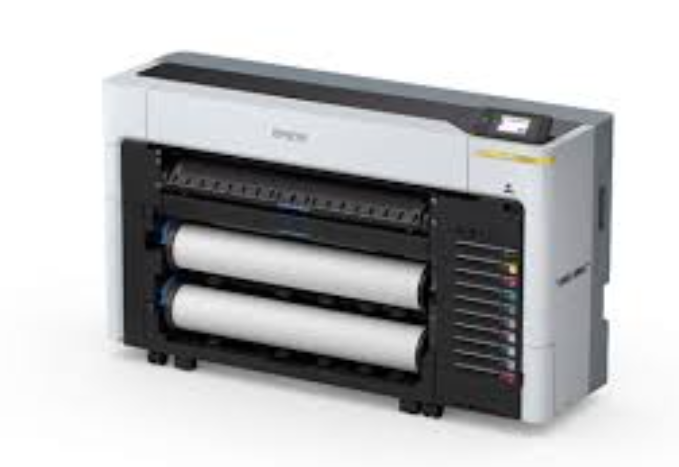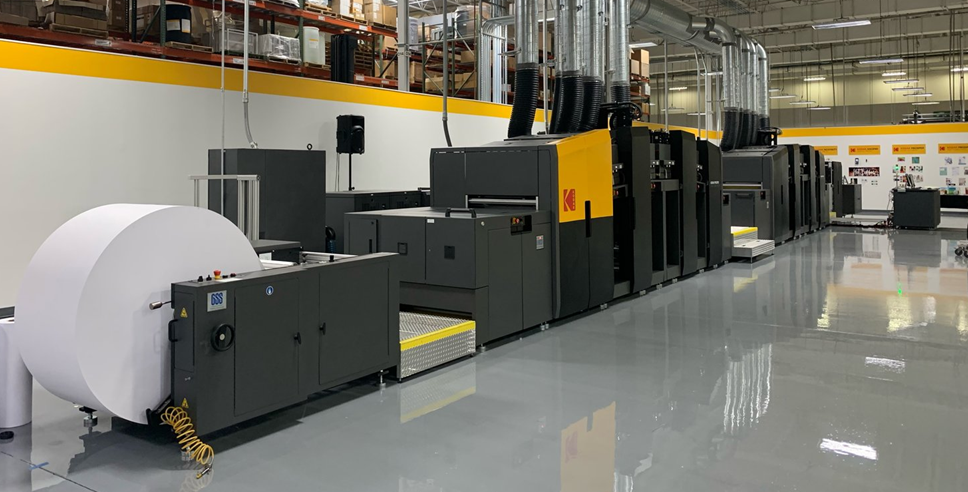Introduction
In the history of book and magazine printing, offset printing machines have always played a significant role. In major printing factories, offset printing machines have consistently been the core equipment. However, in the past decade, rotary ink-jet printing machines have gradually been adopted by many printing factories. Due to their high speed, high quality, and flexibility, they have become one of the main pieces of equipment in many printing plants. This article will provide a detailed introduction to the development of rotary ink-jet technology, its equipment advantages, and its application in printing factories.
The Development History of Rotary Ink-Jet Printing Machines
Early Exploration and Germination Period (before the 1970s)
The earliest ink-jet technology can be traced back to the 19th century, but true commercialization began in the mid-20th century. Early ink-jet technology was primarily used in computer printing and office automation, and it had not yet combined with rotary printing technology.

(Early Ink-Jet Printer, HP DeskJet 500C)
Breakthrough in Ink-Jet Technology (1970s-1980s)
Significant advancements in ink-jet printing technology occurred in the 1970s, with companies like HP and Canon launching commercial ink-jet printers. Meanwhile, rotary printing machines were widely used in high-volume printing fields such as newspapers and magazines, but the two technologies had not yet merged.
Preliminary Integration and Experimentation (1990s)
In the 1990s, as digital technology became widespread, ink-jet technology gradually permeated the commercial printing sector. Some pioneering companies began to experiment with combining ink-jet technology with rotary printing for short-run and personalized printing.

(Epson SureColor Series Ink-Jet Printers, early attempts at combining ink-jet and rotary printing.)
Technological Maturity and Commercialization (early 21st century)
Entering the 21st century, ink-jet technology made significant progress with substantial improvements in printing speed and precision. Post-2000, companies such as HP Indigo, Kodak, and Fuji Xerox successively launched commercial rotary ink-jet printers, marking the maturity and commercialization of this technology.
Rapid Development and Diverse Applications (2010s to present)
Over the past decade, rotary ink-jet printing machines have continued to improve in printing speed, print quality, and cost-effectiveness. Their application range has expanded from traditional publishing to packaging, advertising, and labeling. High-end equipment such as the HP PageWide and Kodak PROSPER series have further driven industry development.

(KODAK PROSPER 7000 Turbo Press,the world's fastest inkjet printing machine)
Advantages of Rotary Ink-Jet Equipment
Speed and Efficiency
Rotary ink-jet printers are renowned for their high-speed printing capabilities, suitable for large-scale printing tasks. They can produce a significant amount of prints in a short time, making them ideal for orders requiring quick turnaround.
Variable Data Printing
A notable advantage of rotary ink-jet technology is its capability for variable data printing. This means that each print can contain different content, such as personalized advertisements or customized texts, which is unattainable with traditional offset printers.
No Need for Plates
Rotary ink-jet printers do not require a platemaking process, saving time and costs. Printing files can be sent directly from the computer to the printer, simplifying the printing process. Traditional offset printers need CTP plate making equipment to create the necessary plates, adding to the printing costs and time.
Environmental Friendliness and Waste Reduction
Since rotary ink-jet printers do not use printing plates, they reduce the use of chemicals, offering an environmentally friendly advantage. Additionally, they can print on demand, avoiding excess inventory and paper waste.
Current Usage in Printing Factories

(The customer is receiving practical training on rotary ink-jet printing machine)
Efficient Production and Customized Services
Modern printing factories achieve efficient production and customized services through rotary ink-jet printers. Compared to traditional offset printing, ink-jet printing does not require plate making, saving platemaking time and costs, and is suitable for short-run and on-demand printing.
Diverse Applications
Rotary ink-jet printers are widely used in the printing of books, magazines, and newspapers, and also play a significant role in labeling, packaging, and advertising. For example, in label printing, ink-jet technology can achieve high-precision, high-quality full-color printing to meet various customer demands.
Environmental Protection and Sustainable Development
Ink-jet printing reduces the use of chemicals, making it more environmentally friendly. At the same time, on-demand printing reduces inventory waste, helping to achieve sustainable development goals. Many printing factories are starting to use eco-friendly inks and recycled paper, further promoting green printing development.
Intelligent and Automated
With the development of the Internet of Things and artificial intelligence technologies, modern rotary ink-jet printers have achieved intelligent and automated operations. Through network monitoring, printing factories can monitor equipment status in real-time, improve production efficiency, and reduce downtime.
Application Of Rotary Inkjet Rotary Digital Printing Press Technology
As the printing market develops more and more rapidly, printing service providers apply rotary inkjet rotary digital printing machine technology to large-scale printing in the fields of commercial printing, book publishing, etc.
Rotary inkjet printing of books and magazines: With the development of digital technology, rotary inkjet technology is applied to book and magazine printing, especially in personalized printing. Some large publishing houses such as Science Press, People's Posts and Telecommunications Press, Electronics Industry Press, Machinery Industry Press, Chemical Industry Press, etc. are exploring the application of inkjet printing.
Commercial printing field: The application of inkjet printing equipment in the field of commercial printing is on the rise.

(Books printed by Oyang rotary-ink jet printer)
Oyang Rotary Ink-Jet Printers
Zhejiang Ounuo Technology Co., Ltd.(Oyang Machinery)was established in 2006 and is committed to providing customers with integrated packaging and printing solutions.The company established the digital printing project in 2018, and has maintained innovative development and reform in recent years, absorbing the latest technologies and concepts in the market.


(CTI-PRO-440K-HD Rotary Ink-jet Digital Printing Machine)
Zhejiang Ounuo Machinery Tech Co., Ltd. is about to launch a newly designed rotary ink-jet printing device with the following advantages:
· Equipped with Epson 1200dpi print heads, offering ultra-high precision comparable to offset printing quality.
· Independent paper buffering unit, enabling uninterrupted feeding and meeting high-speed production requirements.
· More stable cutting and feeding units, providing more stable production output, with a maximum speed of 120 meters per minute in single black mode.
Conclusion
With continuous technological advancements, rotary ink-jet printing machines are becoming increasingly important in the printing industry. They not only enhance production efficiency but also promote environmental and intelligent development, meeting the increasingly diverse market demands. In this technological revolution, Zhejiang Ounuo Machinery Tech Co., Ltd. has always been at the forefront, committed to providing customers with the most advanced printing solutions. Looking to the future, we will continue to invest in digital printing, continuously innovate, and improve product performance and service quality. We firmly believe that with everyone's joint efforts, the future of digital printing will be even better. Zhejiang Ounuo Machinery Tech Co., Ltd. is willing to join hands with colleagues from all walks of life to embrace the opportunities and challenges of the new era together!




















